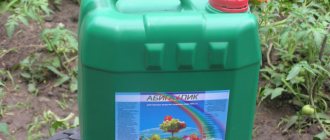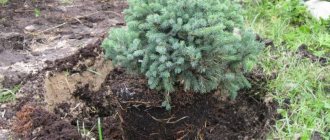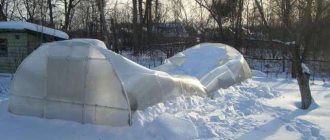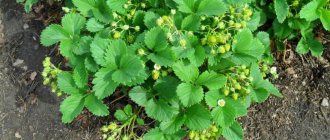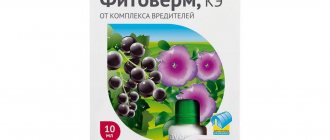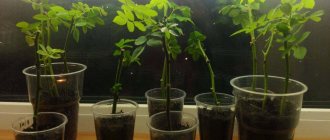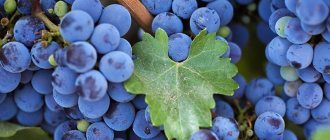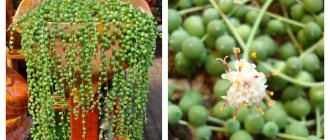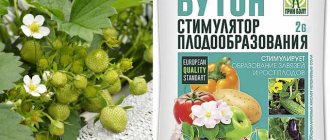What is the growing season?
Vegetation and growing season are different concepts.
- Vegetation is the state of growth and development of a plant.
- The growing season is the period of time during which a plant goes through a full development cycle. This period includes certain phases such as seed germination, bud swelling, flowering, fruiting, and so on.
Controlling the growing season allows you to get a larger harvest. For various vegetable and fruit crops, optimal conditions can be created for their rapid development. Sometimes this requires speeding up the growing season while slowing down fruiting. Some vegetables, on the contrary, need to slow down the growing season to improve the quality of the harvest and subsequent better storage.
In vegetables
Vegetation occurs differently in different crops. It is also different for vegetables:
- For potatoes, this period lasts 110-130 days. This is the average level, since the vegetable can be early, medium and late. The process begins with the germination of the sprout. Then comes flowering and pollination. Then “green apples” form on the bush. After the stems dry, the growing season ends and you can begin harvesting.
- The growing season for early-ripening cucumbers takes 95-105 days, and for late-ripening cucumbers it takes 106-120 days. It may take 25-45 days before the bush blooms, and then there will be fruits. In the last 2 months of the growing season, flowering continues, and new fruits still appear. And with the arrival of spring, the plant dries out, and this period ends.
- The growing season of tomatoes is similar to cucumbers. Only the period is slightly different, since tomatoes are early ripening (55-75 days), early ripening (76-95 days), mid-ripening (95-110 days), mid-late (111-120 days) and late (121-135 days).
- The growing season for cabbage lasts 3-6 months, it all depends on the variety.
Factors influencing vegetation
The growing season for plants of different species and varieties can vary significantly. Average values are considered to be from 3 days to 3 months. The timing depends on several factors, the main ones being:
- soil condition;
- climatic conditions;
- plant diseases and pathologies;
- heredity of cultures.
The climate in our country is not always favorable to some plants. It happens that crops do not have time to ripen - in this case, the harvest has to be harvested earlier than planned. If the weather is favorable, plants can produce several harvests per year - here the extended growing season allows the crops to develop so much.
Why control?
The vegetative process is controlled to increase the quantity and quality of the crop.
Skillful adjustment of environmental conditions allows you to slow down or speed up, push back or bring closer one or another stage of the growing season when required. To achieve the highest possible fertility or the highest quality crop, you need to know at what point which plant needs adjustments.
In some cases, it is advisable to maintain conditions that will ensure maximum speed of plant development and growth. And sometimes it is necessary to delay the onset of the growing season, for example, in cucumbers and tomatoes. This will affect the quantity of the harvest - fewer fruits will have time to ripen, but the quality will be higher.
If the goal is to harvest root crops or green parts, then it is advisable to delay fruiting and stimulate growth, since from the moment the flower stalks appear, the shoots begin to become stiff and lose nutritional value. For the same reason, queen cells of two-year-old plants must be kept at low temperatures. With such storage, growth is inhibited and the processes of preparation for flowering are activated.
Vegetation depending on the life cycle of plants
The life cycle of a plant also significantly influences its growing season. There are certain differences in this between annual and perennial crops.
Annual plants
The shortest life expectancy falls on annual plants. For areas with a cold climate, annual seeds are planted in the spring; by autumn, their seeds have time to ripen. In the southern regions there is constant vegetation of plants, but their life expectancy is only one season.
The speed of the growing season of annual plants makes it possible to experiment annually with plantings due to the constant renewal of species. The advantage of perennial crops is their ease of handling due to less waste of money and time.
Certain plant species or varieties require two years to complete the growing season. In the first year, the formation of bulbs, roots, full of nutrients occurs. The formation of seeds or fruits responsible for the reproduction of the species occurs as early as next year. In the subtropics, vegetation continues naturally, and for climate zones with low temperatures this occurs by planting overwintered parts of plants.
Perennials
Perennials continue to bear fruit throughout their life cycle. In the first year of life, they develop organs responsible for storing the nutrients necessary for plant development. After wintering, shoots are formed that go from development to death; such periods can last for many years.
In trees, the growing season is determined by the time of active life, including the beginning of the movement of juices, the opening of buds, up to the shedding of leaves.
Start
The main condition that determines the time of the growing season is the length of the day and temperature, this is due to the frequency of light and heat from the sun, as well as geographic location.
Growth phase
The beginning of the growth and development phase of the apple tree depends on the variety, agricultural technology and natural conditions. The duration and intensity of illumination, the rate of increase or decrease in air temperature, its humidity and other environmental conditions may change the rate of phenophases from year to year. With increased air and soil humidity, the growing season lasts longer, and with a lack of moisture, it shortens.
Vegetative and flower buds do not bloom at the same time, first the vegetative bud swells, then the bud scales burst and a greenish cone appears, leaf denticles protrude and as a result a full-fledged leaf develops. In the second half of the growing season, the buds formed in the axils of the leaves finish forming. At this time, the shoots begin to accumulate a supply of substances, which is necessary for wintering and development for the next year. How the shoot develops is influenced not only by the number and size of buds, but also by the conditions of plant growth and its nutrition throughout the growing season. The apple tree has weakly growing shoots, so this tree produces fruit buds.
Apple shoots grow in approximately 70-90 days, this depends on the area of growth and natural conditions. Fruit buds are located in the axils of the leaves; they can be lateral or apical. First, the integumentary scales are formed, then the pistils and stamens - the internal organs of the flower - are formed. Apple tree buds are formed within three months. The period of formation of flower buds ends in the spring of the next year.
Bloom
The entire growing season of flower buds begins with swelling and ends with a fully opened flower. The buds on the same tree bloom unevenly, so it can bloom for several days. Weather conditions significantly affect the duration of flowering. Flowering ends faster in a hot and dry spring than in a cold and drawn-out spring. The process of fertilization in a flower can only occur at a favorable temperature.
Development
By the end of spring - beginning of summer, trees begin to live not off accumulated nutrients, but begin to absorb them from the soil. It is necessary to provide them with proper watering, apply mineral and organic fertilizers, and regulate the thermal regime of the soil by mulching and watering.
All about the medicinal properties of lingonberries and their contraindications
Vegetation depending on seasonality
A year-long period of time for perennial plants is usually divided into 4 periods:
- vegetative growth;
- autumn transitional;
- relative peace;
- spring transitional.
The repetition of these periods in perennial plants in our country occurs annually. The growing season includes only three out of four points. The winter period does not include this time. Depending on weather conditions, the beginning of the spring and autumn transition periods may vary.
Autumn period
This time period is characterized by the covering of plants with a woody layer. This occurs due to the starch accumulated by them during their active life - it is converted into sugar, which provides good protection for the winter period. In autumn, small, nutrient-absorbing roots continue to grow continuously. They grow until frost sets in. Most annual plants in our country end their life cycle in the fall.
Rest period
The visible active life of plants ceases during this period. Accumulated nutrients allow perennial plants to survive. However, in the ground at a depth of several tens of centimeters, the roots continue their work, allowing trees and shrubs to receive part of their nutrition. By the beginning of spring, food supplies are significantly depleted.
Sometimes you can observe the manifestation of plant activity during the thaw period, when the temperature rises high - some grasses begin to turn green, buds swell on the trees.
To keep perennial plants alive, it is important to replenish their nutrients. Due to severe moisture loss during winter, plants may die, so additional watering in the autumn will not be superfluous for them.
Spring period
In spring, plants continue to grow their root system again. At the same time, the activity of the ground part increases sharply. The process of plant development proceeds faster the longer the daylight hours and the higher the temperature. For annuals, this period most often marks the beginning of the life cycle.
The influence of irrigation on the growth of trees and shrubs
In some years, when the summer is very hot, tree growth is delayed. They lack moisture. If heavy rains suddenly begin in the second half of summer, then this is also not very good for the plant. Due to the abundance of moisture, trees and shrubs give a strong burst of growth, and it drags on. If the branches continue to grow, they will not be well prepared for the winter. We have already said what plant vegetation means. It involves the accumulation of nutrients, while the shoots must ripen. If this does not happen, the plant may die. Therefore, the goal of gardeners in the fall is to prevent secondary growth of shoots.
Hawthorns: the most unpretentious, decorative species, growing features
Growing season depending on plant type
The diversity of plant species on our planet is amazing. Various herbs, vegetables, berries, trees, shrubs - each representative of the flora has its own developmental characteristics. Vegetable and fruit crops are the most important for agriculture, so it is their growing seasons that are worth considering in more detail.
Vegetation of currants, raspberries and gooseberries
After winter, currants wake up early - the buds swell with the onset of spring. The speed of its development depends on the area of growth. Following the buds, after a couple of weeks, buds begin to form, flowering lasts no more than a week.
Raspberries begin their growing season at the end of March; the difference in varieties is not particularly important here. Raspberries bloom after a few months, the ripening of the berries ends in mid-summer.
The growing season of gooseberries begins earlier than other shrubs. After 3 weeks it blooms, and after two months the berries appear.
Removing old dry branches helps gooseberries and currants grow better.
Growing season for fruit trees
Here it all begins with the swelling of flower buds, a week after them the leaf buds swell. Depending on the species, this period of trees has its own characteristics.
Apple trees begin to bud at 10 degrees outside the window. These trees bloom for a week and a half. They can bear fruit all summer, from July until late autumn, it all depends on the variety.
Already at six degrees above zero, pear trees begin to awaken. Two weeks after the start of the growing season, pears begin to bloom. With a sharp cold snap, the growing season may stop. A week or a few after flowering, the trees begin to bear fruit.
Plums fade in May, after which fruits form, the ripening of which ends by August or mid-September, depending on the variety.
Cherry is not so demanding on temperature conditions, care and soil composition, so its growing season begins in April and passes quickly.
Cucumbers, tomatoes, cabbage, potatoes
Based on the length of the growing season, crops are divided into:
- early ripening;
- mid-season;
- late ripening.
Table 1. Heat requirements of vegetable plants depending on the growing season
| Vegetable plants | Optimal temperature (°C) | Critical temperature (°C) | |||
| For seed swelling | For seed germination | For laying fruits | For seedlings | For mature plants | |
| Eggplant | + 14-16 | + 25-30 | + 25-30 | + 5-6 | — 1 |
| Cabbage | + 2-3 | + 15-23 | + 15-17 | — 2-3 | — 8-10 |
| Carrot | + 4-6 | + 17-25 | + 15-25 | — 2-3 | — 3-4 |
| Cucumber | + 14-16 | + 25-30 | + 22-28 | + 6-8 | + 2-3 |
| Pepper | + 14-16 | + 25-30 | + 25-30 | + 5-6 | — 1 |
| Tomato | + 10-12 | + 25-30 | + 20-27 | + 3-5 | — 1 |
The growing season of potatoes lasts about 4 months. This indicator is averaged for early-ripening and late-ripening varieties. First, the sprout sprouts, then the potato blooms and is pollinated, and then inedible fruits appear on the bush. The end of the growing season comes with the drying of the upper part of the bush - this time marks the start of harvesting.
For early cucumbers, the growing season takes about 100 days, for late-ripening cucumbers it takes two weeks more. The cucumber bush blooms about a month from the beginning of growth, then until the end of the growing season the plant is able to bear fruit and bloom. The end of the growing season occurs at the beginning of autumn.
The growing season of cucumbers can be accelerated by warming the seeds before sowing.
The growing season of tomatoes is similar to cucumber, only the time frame is slightly shifted: the fastest-ripening tomatoes can ripen in 2 months, the latest varieties ripen up to 4.5 months.
For cabbage, this period lasts from 3 months to six months.
Feeding and fertilizers
Feeding various crops is divided into two ways:
- Root. This is done by watering or sprinkling the soil in which the plant “sits”. It has become widespread among summer residents due to its simplicity and benefits. It is most effective during the period when the seedlings have not yet been planted in the ground, since when growing already on the territory of a summer cottage, there is an influence of external factors (frequent watering, rains that wash away many useful substances).
- Foliar spraying is a simple spraying of the leaves and stems of the crop being treated. It is also quite easy to use, but is used less often. Good for crops planted in the ground due to the speed of absorption of nutrients.
Regardless of the method, seedlings should be processed in the absence of dazzling sunlight.
Nitrogen fertilizers
Most often, nitrogen fertilizers are used to improve vegetation. For annual vegetables, this weapon is effective if used in the spring or early summer, since in the fall, when crop growth approaches the cover, it no longer makes sense to fertilize the soil.
Please note: it is better to fertilize seedlings in the early morning. Do not allow fertilizer to get on the leaves under any circumstances, as this will cause burns.
Nitrogen is beneficial for the fertilization process
If the plants have stopped growing and the lower leaves have begun to turn yellow, these are sure signs of nitrogen starvation. To correct the situation, you need to feed the seedlings:
- urea (44%);
- ammonium nitrate (35%);
- ammonia water (15-25%);
- ammonium sulfate (20%).
Fertilizers can be in solid (granules) and weak forms. Of course, the effectiveness of liquid fertilizers is higher due to the speed of delivery of the substance to the roots of plants. Before feeding the seedlings with a solution (1-2 tablespoons per 10 liters of water), it must be watered well, allowed to sit for a couple of hours, loosen the soil and only then “feed” it with nitrogen.
Phosphorus fertilizers
Another good means of feeding is phosphorus fertilizers (diammophos, superphosphate, phosphate rock, etc.). They help the root system to develop well. With insufficient phosphorus, plants begin to darken and leaves begin to fall off. To stop this process, you can use the most accessible key of this substance - superphosphate: dilute 3 grams of fertilizer with 1 liter of water. Water at the root.
Superphosphate
Potassium fertilizers
Gardeners also often use products containing potassium:
- potassium sulfate (50%);
- potassium monophosphate (33%);
- potassium nitrate (45%).
The first time you can treat the sprout with potassium only when three leaves appear, the second time - two weeks after planting in the garden.
Important! It is best to alternate feeding plants with different substances, and also combine it with fertilizers that promote growth (Kornevin, Epin, Zircon, etc.).
In addition to various chemicals, you can also use organic ones: manure, humus, chicken droppings, peat and others. The special advantage of such fertilizers, of course, is their naturalness and safety for the garden, animals and people.
Conditions for a favorable growing season
The favorable course of plant vegetation is inextricably linked with environmental conditions. The main ones are:
- Warm. For normal growth and development of plants, a certain temperature regime is required. The above-ground parts of plants require more heat than the root system. Excess heat, as well as its lack, aggravate development and can lead to death.
- Water. It makes up 4/5 of the wet weight of plants. Huge volumes of it are consumed during any period of their development. The main source of moisture is the soil; air humidity is also important. Artificial watering is often an integral part of maintaining the vast majority of plants in order to obtain the best yield from them.
- Light. Under natural conditions, sunlight is the only source of energy for photosynthesis. The need for lighting depends on the species and varieties, development period, nutrition and conditions of plant maintenance.
- Air. It acts as the main source of carbon dioxide, which provides photosynthesis. Also, plants, mainly their root systems, take oxygen from the air.
- Nutrients . Plants still need various minerals to form organs and yield. Depending on the conditions of detention, a lack or excess of certain elements can significantly slow down the development or lead to the death of plants. Today there are many organic, specially developed chemical fertilizers and additives that allow you to optimize the nutrition of any representative of the flora.
All these conditions are of equal importance, and their optimal combination determines the normal growth and development of any plant.
Methods of influencing vegetation
The growing season of plants can be influenced using several methods, including:
- watering;
- fertilizers;
- temperature regime;
- spraying.
Each of these methods is worth considering in more detail.
Watering
Regular watering is essential for any developing plant. Fruit and leafy vegetables need this most, especially those that have not yet fully hardened. The optimal time for watering when placing vegetables on open ground is lunch or evening; you should not pour too much water. If the plants are located in a greenhouse, it is best to water them before noon - this way the water will have time to be completely absorbed before nightfall.
Tomatoes need to be watered at the root, because watering the leaves of these plants increases the likelihood of certain diseases. Onions require watering only at the beginning of their growth.
Some plants do not need watering provided they receive normal rainfall. Such plants include garlic, red beets, onion sets and some others.
Fertilizer and feeding
Fertilizers and fertilizers are substances that supplement the nutrition of grown plants and change the properties of the soil. It is especially important to fertilize and feed perennial plants and trees. Fruiting bushes that produce crops early begin the growing season with nutrients remaining from the fall. If there is a shortage of these substances, the plant will not bear fruit every year - it will have to retain part of the nutrition to maintain life. That is why it is necessary to provide care for plants not only in the spring and summer, but also in the fall.
At the beginning of development, nitrogen-containing fertilizers are suitable for trees. This way you can ensure a large harvest for several years to come. But you should not use this fertilizer in the autumn - this can only harm the plant. Bird droppings are also considered useful solutions and fertilizers. Before use, it must be mixed and allowed to stand for several days. After this, the fertilizer can be applied, having previously diluted it by half with water.
Additionally, read the article on how and what to feed fruit trees and shrubs.
Spraying
Many plants need regular spraying against pests and diseases, otherwise the harvest may be significantly delayed, and its quality will become noticeably worse. Spraying of trees and shrubs begins with the melting of snow, when buds are already forming.
There are many different spray products on the market today. It is safe to collect fruits after this treatment only after 3 weeks. Before you start spraying, you should take care of special clothing: goggles, gloves, a respirator. You can purchase it in the same specialized stores that sell fertilizers and spraying products.
Temperature
The growing season of plants requires certain climatic conditions. Dry areas are characterized by time-limited development, and in areas with a temperate climate this process can be significantly extended, which allows for a larger harvest.
Conventionally, the growing seasonal framework for the development of most plants is usually combined with the moment of transition of the average daily temperature in autumn and spring above +5°C. But it is worth understanding that this figure is an average, and each plant species has its own favorable development temperature.
Depending on the perception of temperatures, plants are divided into cold-resistant and heat-loving. For the former, a lower temperature, relative to the average, is preferable, and a high one will be destructive; for the latter, the opposite is true. Therefore, before planting any crops, it is necessary to study the characteristics of their susceptibility to certain climate conditions in a given area.
For the normal development of plants, one should also not forget about their various diseases. It is necessary to get rid of diseased plants before planting; it is best to burn them.
The most effective ways to ensure optimal growing conditions are watering and fertilizing. Plants need to be watered regularly, depending on the water needs of each type. Nitrogen-containing and organic fertilizers should be applied in the spring and summer. With these measures you can significantly increase the yield.
Ending
The growth of the aboveground and underground parts stops by the second half of summer, the trees are dormant. Root growth increases in late autumn, and growth of the above-ground part stops. After leaf fall, a period of dormancy begins, which in turn is divided into 3 phases: initial dormancy, natural or deep dormancy and forced dormancy. If the plant is moved to greenhouse conditions during the deep dormancy phase, it will still not come out of this period. The duration of dormancy is an important economic and biological property of a plant. The deeper and more stable the peace, the fewer surprises you will encounter when working with wood. Deep dormancy helps plants survive severe frosts.
In winter, trees can exhibit some vital activity even during cold weather, and not just during thaws. During winter, the accumulated supply of nutrients decreases, and moisture loss occurs through the integumentary tissues of the branches and trunk. With strong winds in cold weather, the loss of moisture can be so severe that it will destroy not only the branches, but also the tree itself. It is best to pay due attention to providing the tree with nutrients and moisture in the autumn.
Early winter apple tree Beauty of Moscow
Acceleration of vegetation
With an increased growing season, plants produce crops earlier. Sometimes this can be extremely useful, it encourages people to use special methods to speed up the growing season to increase harvest volumes. These methods are based on the same provision of plants with the necessary moisture and nutrition, along with the use of growth-stimulating substances. Among these methods are:
- Growing in a hydroponic setup . The hydroponics method involves the plant's roots being located not in the soil, but in a special substrate that is in a solution of nutrients. Mineral wool, crushed stone, expanded clay or coconut fiber are often used as such a substrate.
- Use of growth stimulants. These drugs are based on phytohormones. By stimulating growth, intensive root formation and flowering are caused, the number of ovaries increases and fruit ripening is accelerated. When using such drugs, it is extremely important to know exactly their purpose and strictly adhere to the dosage.
- Aeroponics cultivation. With this method, the plant and its roots are suspended. With the help of a sprayed solution of nutrients, the root system is constantly sprayed; other parts of the plant are not sprayed. In this case, a huge advantage is the minimal likelihood of pests and diseases due to the lack of contact with the ground.
Using the aeroponics method allows you to fully automate cultivation systems.
Reasons for slow vegetation
In general terms, the reasons for the slowdown in vegetation can be called an imbalance of factors that determine the normal development of plants. The most common reasons for slowing down the growing season is a violation of the temperature regime. Thus, hot summers have a detrimental effect on certain agricultural crops, which can cause a sharp reduction in yield. Frosts can also affect the slow development of plants.
Any lack of heat, water, light and nutrition can cause a malfunction in the formation and development of plants, which is why it is so important to monitor them, especially during the growing season.
Application of new technologies
Today, the development of agriculture has reached impressive heights. According to scientists, in the near future, people will completely rid themselves of most agricultural work, maximizing the robotic process of cultivation and harvesting. Along with these claims, genetic engineers are constantly developing new varieties of plants that are resistant to various external factors, be it temperature, diseases, pests or drought.
The concept of vegetation is receiving more and more attention every day, and this only means a stable increase in yield, profitability of production, quality characteristics of plants and many other important factors.
Ecologists consider the process of plant vegetation to be a fundamental stage. Here it is worth understanding that if there is a certain failure in this process, there is a possibility of an unfavorable outcome for any culture. Therefore, it is so important to monitor and care for plants during their growing season.
0
0
Copy link

